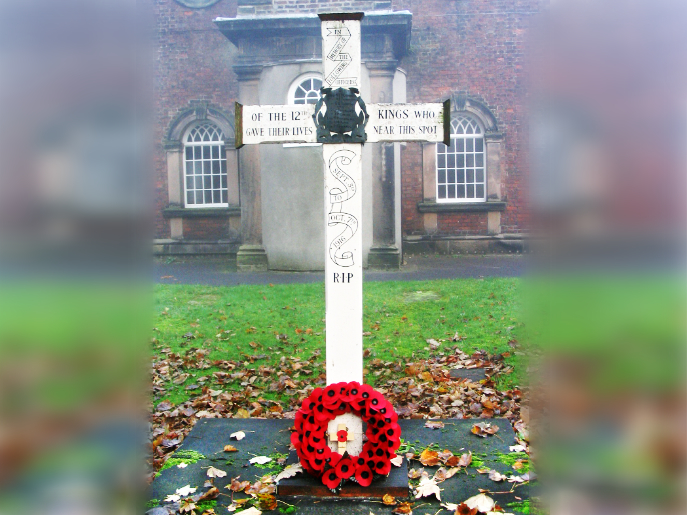
We will remember them.
The Memorial Cross in our graveyard commemorates officers of 12th Battalion, the King’s (Liverpool Regiment).
This unusual cross of remembrance is for officers from the 12th Battalion The King’s (Liverpool Regiment) who died during the Great War. They died in France and Flanders during the bloody fighting 3rd Sept – 8th Oct, 1916.
We remember:
Lieutenant Kenneth Lotherington Hutchings
Second Lieutenant Arthur Ernest Thompson
Second Lieutenant George Eric Thompson
Second Lieutenant John Smethurst
Second Lieutenant Thomas Power Corish
Lieutenant Robert Davison MC
Lieutenant Herbert Harman Dunn
Second Lieutenant Harry Edwards
These men were initially commemorated by their fellow officers at the Advanced Dressing Station Cemetery at Ginchy. Neither the Advanced Dressing Station Cemetery at Ginchy nor the bodies of the men buried there survived the war – they were destroyed as a result of shelling. The men interred there were commemorated in other cemeteries or on the Thiepval Memorial alongside 73,000 of their comrades missing on the Somme between July 1915 and 20th March 1918. After the Armistice, the cross was brought to Formby by relatives of those who died. It still stands here today.
These men are more than names on a plaque: Lest we Forget.
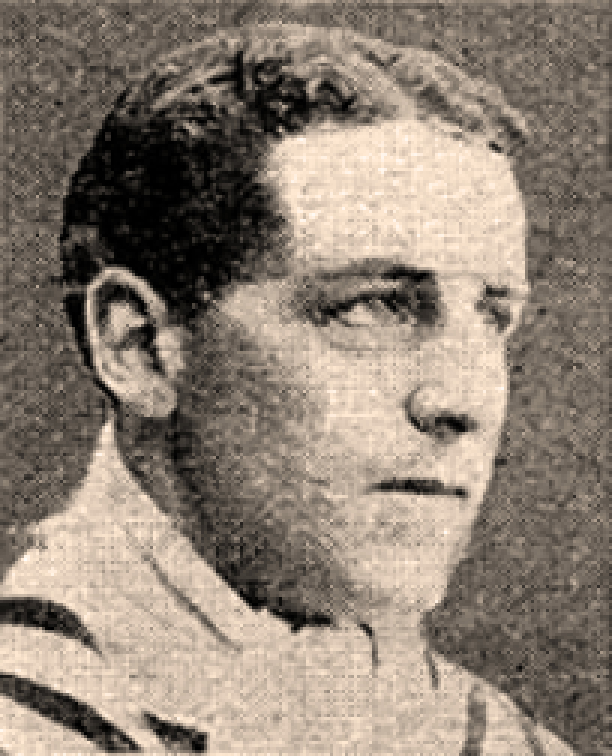
Lieutenant Kenneth Lotherington Hutchings
Kenneth was born at Augusta Villa, Southborough, Kent on 7th December 1882, the son of Edward John Hutchings (surgeon) and Catherine Lotherington Hutchings (née Colebrooke). He attended Tonbridge School where he excelled at cricket, scoring several centuries and one double century in school matches. He played his first game for the Kent county side in the same year that he left school. He played a full county season in 1903 and had his best year in 1906, when he averaged over 60, scored four centuries and led Kent to the county championship. Hutchings played seven times for England and made his debut at Sydney in the 1907/08 series against Australia. The highlight was an innings of 126 in the second test of that series. His last test match came at The Oval in 1909 where he signed off with an innings of 59, once again against Australia. He rather lost form after the 1910 season in which Kent won the championship again, suffered some ill health, and dropped out of first-class cricket in 1912, having amassed 10054 runs at an average 33.62, and with a top score of 176. He took 179 catches and, with his occasional bowling, managed to take 24 wickets. Hutchings was commissioned into the 4th Battalion The King’s (Liverpool Regiment) on 12th September 1914; he was noted as being 5‘ 9” tall weighing 173 lbs. He was living at South View, Old Town Lane, Freshfield from 21st February 1916. Following a spell in hospital, he returned to France on 15thJuly 1916 and was attached to the 12th Battalion The King’s (Liverpool Regiment).
Lieutenant Hutchings died on 3rd September 1916 and is commemorated on the Thiepval Memorial and the war memorial at Southborough in Kent.
Second Lieutenant Arthur Ernest Thompson
Arthur was born at Lyndhurst Grove, Peckham, London and educated at Camberwell Grammar School where he was a member of the Officer Training Corps. He was the son of Sarah Thompson of 1 Bushey Hill Road, Camberwell later of 1, ‘B’ Block, Peabody Buildings, Camberwell and brother to Charles J Thompson of 37 Upper Park Road, Hampstead. He originally enlisted as No 2031, 2nd County of London Yeomanry on 8th September 1914, aged 19 years 3 months and employed as a clerk with W Greenwell and Company of 2 Finch Lane EC. He lived at 1 Bushey Hill Road, Camberwell and was 6′ tall, weighing 173 lbs with good physical development. He was commissioned in the 14th Battalion The King’s (Liverpool Regiment) on 2nd February 1915 after a period of training at Oswestry. He married Adeline Maud Thompson (nee Pope) on 28th May 1915 at Eastbourne Register Office – Adeline emigrated to Ontario, Canada following the war. He joined No 4 Entrenching Battalion on 20th April 1916 and served with them until 7th June 1916.
Second Lieutenant Thompson died on 3rd September 1916 serving with 12th Battalion The King’s (Liverpool Regiment) and is commemorated on the Thiepval Memorial.
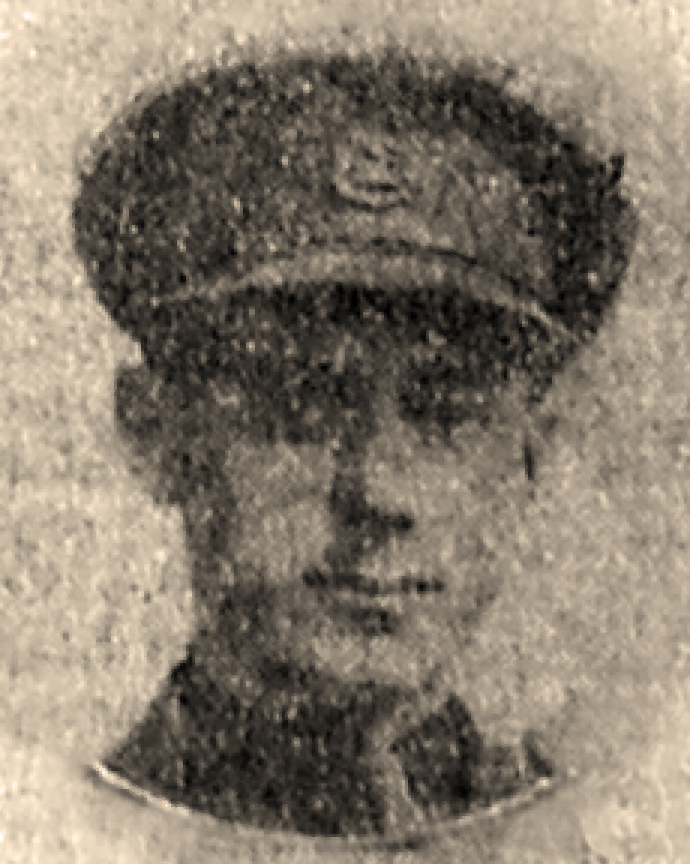
Second Lieutenant George Eric Thompson
George is listed on Formby’s Roll of Honour as living at Parkfield, Freshfield Road., Formby; the elder son of George F and Gertrude F Thompson. He was educated at Dunchurch Hall, Rugby and at Harrow; playing for the school at cricket against Eton and at football against Winchester. Thompson was previously employed on the staff of Messrs Milligan & MacIntosh, Cotton Merchants of Liverpool and was a playing member of the Northern Cricket Club and the West Lancashire Golf Club. He enlisted in 17th Battalion The King’s (Liverpool Regiment) on 31st August 1914 and was transferred to The Inns of Court Officer Training Corps on 1stAugust 1915; No 5274, standing 5’ 8” tall and weighing 133 lbs. He was commissioned on 5th December 1915.
Second Lieutenant Thompson died aged 20, on 3rd September 1916 whilst serving with ‘C’ Company, 4th Battalion The King’s (Liverpool Regiment). He had been at the front for 7 weeks. He is commemorated on the Thiepval Memorial and the war memorial in Northern Cricket Club, Elm Avenue, Moor Park, Great Crosby.
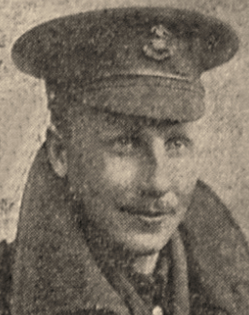
Second Lieutenant John Smethurst
John was born in Bryn, Wigan on 17th September 1891, the elder son of the late John Smethurst of Garwood Hill Collieries, Bryn near Wigan and Mrs Janet Murray Smethurst of 13 Caroline Place Oxton and later of 5, Kylemore Road, Oxton. He was educated at Birkenhead School and at Rugby where he was a member of the Officer Training Corps; leaving in 1909. He was a member of Oxton Cricket Club and Wallasey Golf Club. He originally enlisted in Liverpool on 1st September 1914 in ‘B’ Company 17th Battalion The King’s (Liverpool Regiment) as No 15273 and was immediately appointed Company Quarter Master Sergeant at enlistment. He was noted as being: height 5′ 11″, weight 145lbs, complexion fresh, eyes grey, hair brown, occupation cotton salesman with Messrs Smith, Edwards and Company (he had served a 5-year apprenticeship which ended in September 1914), religion Church of England. His commission application, dated 20th July 1915, gave his permanent address as 13 Caroline Place, Oxton. He was discharged to commission in The King’s (Liverpool Regiment) on 2nd August 1915 from Belton Park, Grantham. He arrived in France 6th June 1916 and joined No 18 Infantry Base Depot the same day. He joined 12th Battalion The King’s (Liverpool Regiment) 18th June 1916.
Second Lieutenant Smethurst was killed leading an attack on 16th September 1916: the day before his 25th birthday. He is commemorated in the Guards’ Cemetery, Lesboeuf and on the war memorials at YMCA, 6 Mount Pleasant, Liverpool; Liverpool Cotton Association Ltd, 620 Cotton Exchange Building, Edmund Street, Liverpool and Wallasey Golf Club, Bayswater Road, New Brighton, Wallasey. There is a photograph of him in Rugby School Memorial Book 4.
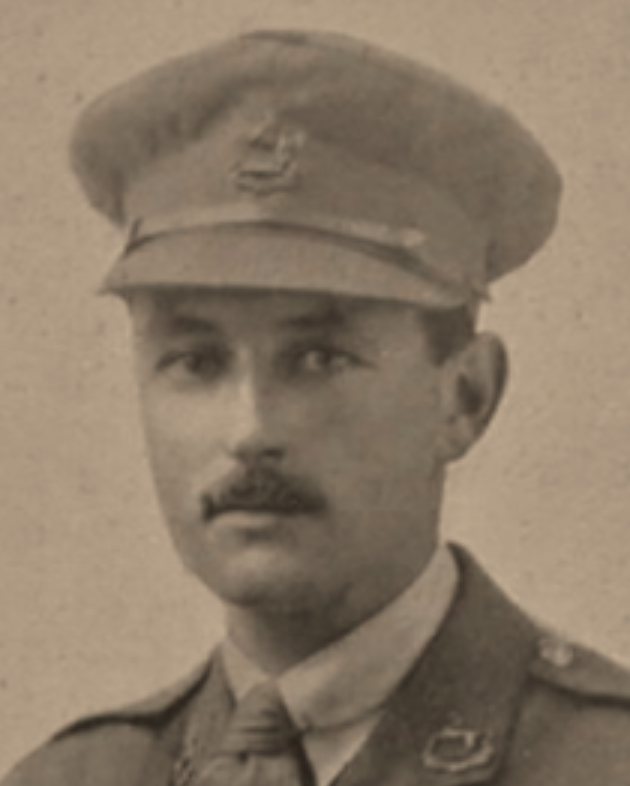
Second Lieutenant Thomas Power Corish
Thomas was born in Liverpool, the son of Thomas and Emily Corish of 2 Prescot Drive, Fairfield, Liverpool and brother to Eiley G Corish. He was educated at St Francis Xavier’s College and at Mount St Mary’s Jesuit College, Derbyshire. He was in business with his father, from where he enlisted in Liverpool on 3rd September 1914 in 17th Battalion The King’s (Liverpool Regiment) as No 15883. He was promoted to Lance Corporal on 23rdFebruary 1915 and promoted to Corporal on 11th May 1915. He was discharged to commission 6th August 1915 in 15th Battalion The King’s (Liverpool Regiment). He joined 12th Battalion The King’s (Liverpool Regiment) as a bombing officer from No 20 Infantry Base Depot Étaples on 27th March 1916.
Second Lieutenant Corish was killed by machine gun fire leading his men on a bombing attack on the German trenches on 16th September 1916, aged 33. He is commemorated on the Thiepval Memorial and on the war memorials at St Francis Xavier Roman Catholic College, Beaconsfield Road, Woolton; St Anne Parish Church, Prescot Road, Stanley and St Francis Xavier Roman Catholic Church, Salisbury Street, Liverpool.
Lieutenant Robert Davison MC
Robert was born on 29th September 1896 in Ballynafeigh, County Down, the son of Dr John R Davison and Elizabeth Davison of ‘Romanov’, Ormeau Road, Belfast. He originally enlisted in Belfast on 11th November 1914 as No 1884 in the 14th Battalion The Royal Irish Rifles. At enlistment he was living at ‘Romanov’, aged 19 years 2 months, occupation student, height 5′ 7″, weight 118lbs with good physical development. He was commissioned into The King’s (Liverpool Regiment) on 19th November 1914, despite having originally asked for a commission in the Ulster Division. He was sent to France on 24th July 1915 and promoted to Temporary Lieutenant on 12th July 1916.
Lieutenant Davison MC, 12th Battalion The King’s (Liverpool Regiment) died of wounds received at Geudecourt on 8th October 1916, aged 20. For this action Davison received the Military Cross. The citation reads “For conspicuous gallantry during operations. He showed great determination when consolidating the position of his company close to the enemy, under heavy machine gun fire and shell fire. He displayed great coolness and set a fine example.” He is commemorated in Grove Town Cemetery, Méaulte.
Lieutenant Herbert Harman Dunn
Herbert was born in Bromley, Kent the son of Mr and Mrs Herbert George Dunn of The Briars, Newman Road., Bromley, Kent and, in the 1901 Census, is listed as an 18 year old upholsterer’s assistant. He was married to Mrs Gertrude Dunn (née Saddington) – they married on 8th September 1914 at the Church of St Leonard, Streatham: at the time of the death of her husband, Gertrude was living at 6 Woodnook Road, Streatham. Dunn had served as Sergeant No 751 in ‘B’ Company, 8th Battalion The Royal West Kent Regiment from 10th September 1914 to 15th February 1915 when he was discharged to commission. Whilst with The Royal West Kent Regiment he was stationed at Shoreham and Worthing. He was commissioned as Lieutenant on 15th February 1915 and was posted to 12th Battalion The King’s (Liverpool Regiment) on 13th April 1916, joining them for duty on 23rd April 1916. He took over command of ‘B’ Company on 2nd August 1916.
Lieutenant Dunn was killed in action on 26th September 1916, aged 33. He is commemorated in Serre Road Cemetery No2.
Second Lieutenant Harry Edwards
Harry was born in Warnham Lodge, Warnham, Hornsea, Sussex on 4th March 1893, the 3rd of 4 sons of Felix and Ellen Edwards who were living at The Gardens, Warnham Lodge near Horsham at the time of the war. He was brother to William Edwards, Frank Edwards, of 26 Carlyle Road, Norwich, and Alec Felix Edwards who was a Second Lieutenant in 4th Battalion The King’s (Liverpool Regiment). He was also brother to Elizabeth Edwards, of King George Hospital, Waterloo Road, London, Rose Edwards and Kate Ellen Edwards. He originally enlisted in the 1st Battalion The King’s (Liverpool Regiment), aged 18 years and 9 months, as No 10804 in London on 31st December 1909, joining the Battalion at Kinsale, Ireland on 5thJanuary 1910. Previously Edwards had worked as a carpenter and a musician; he left his post with Sir Henry Harben after 4 years to join the army – his father was the head gardener to Sir Henry Harben. Edwards was unmarried, height 6′, weight 158lbs, complexion dark, eyes hazel, hair dark brown, religion Church of England. He was to serve in the band and was described as ‘clean, smart, sober, honest, intelligent and a good worker’. Edwards was appointed Lance Corporal on 22nd July 1912 and bandsman on 10th February 1913. He was promoted to Corporal on 1st January 1914 and left for France on 12th August 1914. He was further promoted to Acting Lance Sergeant on 22nd October 1914 and to Acting Sergeant on 22nd January 1915. Edwards was awarded the Medal of St George (London Gazette 28th August 1915). He was husband to Gladys Muriel Edwards (née Sheppard) of 24 Victoria Road, Aldershot, having been married in Horsham on 8th Jun 1915. He was discharged to commission on 19th September 1916.
Second Lieutenant Edwards died on 7th October 1916 whilst serving with 12th Battalion The King’s (Liverpool Regiment). He is commemorated on the Thiepval Memorial.
